|
Asteroids, meteors, and meteorites
|
|
| HarbingerDawn | Date: Tuesday, 02.04.2013, 10:20 | Message # 91 |
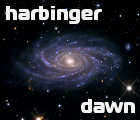 Cosmic Curator
Group: Administrators
 United States
United States
Messages: 8717
Status: Offline
| Quote (Watsisname) An empty space shuttle could shatter it with a speed of only 50m/s.
Something tells me that in reality it would take a bit more than that.
All forum users, please read this!
My SE mods and addons
Phenom II X6 1090T 3.2 GHz, 16 GB DDR3 RAM, GTX 970 3584 MB VRAM
|
| |
| |
| Watsisname | Date: Tuesday, 02.04.2013, 10:36 | Message # 92 |
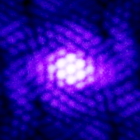 Galaxy Architect
Group: Global Moderators
 United States
United States
Messages: 2613
Status: Offline
| @Harb: That's a first-order approximation by comparing binding energy with kinetic energy. A simulation may reveal that it may take more, though it is also conceivable that it may take less.
@Nova: The 'rubble pile' asteroids like this are actually formed by the re-accumulated fragments from a previous collision, so they're not necessarily very old. Rather, there is a sort of equilibrium between their formation and disruption.

Edited by Watsisname - Tuesday, 02.04.2013, 10:41 |
| |
| |
| midtskogen | Date: Tuesday, 02.04.2013, 11:13 | Message # 93 |
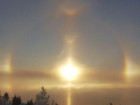 Star Engineer
Group: Users
 Norway
Norway
Messages: 1674
Status: Offline
| Quote (NovaSilisko) It's impressive that these things manage to even exist for very long, then... Of course, they do present quite a small target.
What we see today may well be the result of it being shattered, ripped apart, reshuffled, etc several times.
But if this asteroid is just a pile of rubble, shouldn't we expect something more spherical?
Added (02.04.2013, 14:13)
---------------------------------------------
Quote (Watsisname) @Nova: The 'rubble pile' asteroids like this are actually formed by the re-accumulated fragments from a previous collision, so they're not necessarily very old. Rather, there is a sort of equilibrium between their formation and disruption.
(I need to remember to reload before replying, to avoid say what others already have said)
Yes, and the original asteroid could have been much larger splitting into several new ones, or an asteroid could be the results of two or more joining. The possibilities are many in a span of several billion years.
NIL DIFFICILE VOLENTI

Edited by midtskogen - Tuesday, 02.04.2013, 11:14 |
| |
| |
| Watsisname | Date: Tuesday, 02.04.2013, 11:35 | Message # 94 |
 Galaxy Architect
Group: Global Moderators
 United States
United States
Messages: 2613
Status: Offline
| Quote
But if this asteroid is just a pile of rubble, shouldn't we expect something more spherical?
Not really; the coalescence may be very nonuniform, and it's too small for self-gravity to smooth it out. There may also be very large fragments involved. We're very confident that they are rubble piles because their observed densities are significantly less than what you'd expect from a monolithic asteroid of the same dimensions. The density of Itokawa is less than 2g/cm3.
Quote (I need to remember to reload before replying, to avoid say what others already have said) [etc]
Haha, that happens to me constantly.  And yes, you are very right. It reminds me somewhat of the chaos involved in rain droplet growth. (That's a fascinating topic in and of itself!) And yes, you are very right. It reminds me somewhat of the chaos involved in rain droplet growth. (That's a fascinating topic in and of itself!)

|
| |
| |
| NovaSilisko | Date: Wednesday, 03.04.2013, 00:55 | Message # 95 |
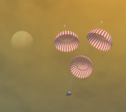 Explorer
Group: SE team
 United States
United States
Messages: 288
Status: Offline
| Another view of Itokawa

Notice Hayabusa's shadow on the right side.
Edited by NovaSilisko - Wednesday, 03.04.2013, 00:56 |
| |
| |
| HarbingerDawn | Date: Saturday, 06.04.2013, 03:25 | Message # 96 |
 Cosmic Curator
Group: Administrators
 United States
United States
Messages: 8717
Status: Offline
| Itokawa in color

JAXA / ISAS / color composite by Ricardo Nunes
All forum users, please read this!
My SE mods and addons
Phenom II X6 1090T 3.2 GHz, 16 GB DDR3 RAM, GTX 970 3584 MB VRAM
|
| |
| |
| Solaris | Date: Wednesday, 10.04.2013, 19:10 | Message # 97 |
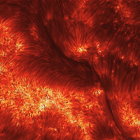 World Builder
Group: Global Moderators
 France
France
Messages: 731
Status: Offline
| Some asteroids in motion from a cool collection of space gifs (not only asteroids) : http://pappubahry.tumblr.com/
Ida and its moon Dactyl, photographed by Galileo on 28 August 1993 on its way to Jupiter

Lutetia, photographed by Rosetta during its flyby, 10 July 2010

Eros, photographed by NEAR Shoemaker, 12 February 2000

Also some close up of Itokawa : http://imgur.com/a/eYv7t#gH2sq
|
| |
| |
| HarbingerDawn | Date: Sunday, 14.04.2013, 17:03 | Message # 98 |
 Cosmic Curator
Group: Administrators
 United States
United States
Messages: 8717
Status: Offline
| 2012 DA14 and the Chelyabinsk Meteor compared to an American football field

All forum users, please read this!
My SE mods and addons
Phenom II X6 1090T 3.2 GHz, 16 GB DDR3 RAM, GTX 970 3584 MB VRAM
|
| |
| |
| Solaris | Date: Sunday, 14.04.2013, 17:14 | Message # 99 |
 World Builder
Group: Global Moderators
 France
France
Messages: 731
Status: Offline
| Very interesting image ! thx for sharing it
|
| |
| |
| Tim | Date: Sunday, 14.04.2013, 22:28 | Message # 100 |
 Explorer
Group: Users
 Belgium
Belgium
Messages: 296
Status: Offline
| Imagine that thing would actually spawn there and drop down...

|
| |
| |
| Watsisname | Date: Sunday, 14.04.2013, 22:56 | Message # 101 |
 Galaxy Architect
Group: Global Moderators
 United States
United States
Messages: 2613
Status: Offline
| I'm glad I'm not the only one who thought of that. 

|
| |
| |
| Disasterpiece | Date: Monday, 15.04.2013, 05:05 | Message # 102 |
 World Builder
Group: Users
 United States
United States
Messages: 640
Status: Offline
| Quote (Tim) Imagine that thing would actually spawn there and drop down...
The only thing I thought of when that scene played was: TOUCHDOWN!Added (15.04.2013, 08:05)
---------------------------------------------
Quote (HarbingerDawn) 2012 DA14 and the Chelyabinsk Meteor compared to an American football field
Also, the shadows are reversed in the picture.
I play teh spase engien
|
| |
| |
| midtskogen | Date: Saturday, 18.05.2013, 10:53 | Message # 103 |
 Star Engineer
Group: Users
 Norway
Norway
Messages: 1674
Status: Offline
| Huge fireball in Argentina 21st April:
Added (18.05.2013, 13:53)
---------------------------------------------
Fairly large impact on the moon:
http://www.universetoday.com/102214....he-moon
Would have been a bright fireball on Earth and probably meteorites if the angle was right.
NIL DIFFICILE VOLENTI

|
| |
| |
| HarbingerDawn | Date: Saturday, 18.05.2013, 18:04 | Message # 104 |
 Cosmic Curator
Group: Administrators
 United States
United States
Messages: 8717
Status: Offline
| Quote (midtskogen) Would have been a bright fireball on Earth and probably meteorites if the angle was right.
Really? Meteorites from an object only a foot wide?
All forum users, please read this!
My SE mods and addons
Phenom II X6 1090T 3.2 GHz, 16 GB DDR3 RAM, GTX 970 3584 MB VRAM
|
| |
| |
| midtskogen | Date: Saturday, 18.05.2013, 20:33 | Message # 105 |
 Star Engineer
Group: Users
 Norway
Norway
Messages: 1674
Status: Offline
| Quote (HarbingerDawn) Really? Meteorites from an object only a foot wide?
There apparently are few sharp limits in this game. But relatively low speed and angle greatly increase the odds, so with those two things in order, size matters less. Had the thing that hit the Moon hit Earth at 50 km/s, I would say forget it. In any case the fireball would be impressive. But fireballs as dim as -10 sometimes produce meteorites. I caught a couple of fireballs last year that are good meteorite candidates despite not being exceptionally bright:
http://voksenlia.net/nytt/2012/ildkule-20120313.mp4
http://voksenlia.net/nytt/2012/ildkule-20120301.mp4
Both were glowing below 30 km altitude and produced a loud bang, which makes meteorites quite likely. These are not very large objects. The first probably is around -10 when seen at a distance of 100 km, the second one about -12. The latter incident has many good accounts and a search will probably be organised. Confirming a meteorite from this relatively modest incident certainly would be nice. But we have more interesting meteorite projects currently in progress, so probably not this year :). Meteorite falls are more common that one could think judging from the amount found. The trouble with fireballs and meteorites is that it's very hard to locate them, except when there are big events with thousands of fragments or when one meteorite is found by chance (then expect others to be spread around a few km apart). Even if there are photographs and eyewitness accounts, the search area might still be dozens of km², and to find something of the size of a fist or even smaller hidden among other rocks or vegetation is very very hard.
We must of course disregard dust sized particles. If you collect material from you roof drain, chances are good that you'll find something of extraterrestial origin.
NIL DIFFICILE VOLENTI

|
| |
| |